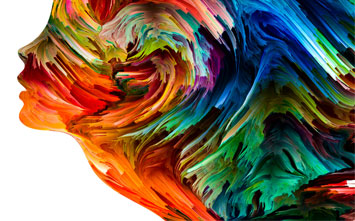
What are the Psychological Effects of Colors?
Color is a powerful tool in the world of design. It can be used to evoke moods, communicate messages, and create ambiance. But what are the psychological effects of colors?
Different colors have different meanings for people and can even affect the way we feel. People associate different colors with positive and negative emotions.
Psychological Aspects on People with Different Personalities & Lifestyles
There is a lot of research on the way colors affect people and their moods, but there are no clear conclusions. What we do know is that people with different personalities have different preferences for colors. For example, introverts tend to like darker colors because they can help them feel less exposed in public. Extroverts are likely to like lighter colors because they make them feel more confident. Researchers at the University of Hertfordshire analyzed data from a study and found that people who have a preference for red might have lower levels of serotonin, which is an important neurotransmitter for mood.
Psychology of Color in Branding & Marketing
In branding, colors have an important role to play. They can influence the way consumers feel about a brand and can even change their perception of the brand’s quality. A study by marketing firm Havas Worldwide found that 89% of respondents said they were more likely to buy from a company after seeing its logo in color, compared with just 7% who said they were less likely to buy from the company after seeing its logo in black and white.
Color psychology is also used in marketing campaigns to evoke emotions in the audience and make them want to buy or use the product or service being advertised. For example, orange is often associated with excitement, so it would be used in an advertisement for a sports drink that wants to evoke feelings of excitement among viewers.
What are the Psychological Implications of the Different Colors?

Color is an integral part of the design process. Color is used to guide the viewer’s eye around the page and to highlight important information.
The emotional response people have when they see color can differ depending on their cultural background. For example, red may be associated with anger in Western cultures while it may symbolize happiness or prosperity in Eastern cultures.
Blue
Blue is also the color of the sky and the ocean, which have long been considered sources of peace. It has a calming effect on humans and can be found in nature. It was discovered that the color blue reduces arousal, aggression, and testosterone levels in men.
Blue appears in over half of all logos because it represents intelligence, trustworthiness, and maturity. Technology companies and large corporations lean towards blue’s steadfastness and security. True blue will make sure you’re taken seriously.
Green
The color green has a strong connection to nature. It can also be found in plants and is often associated with health. Green symbolizes renewal and growth. It is the color of spring, nature, and health. It depicts knowledge and understanding. You often see companies using green logos or colors to represent their brand’s sustainability efforts.
Purple, Indigo, Violet, Lavender, Mauve
The color purple is often used in ceremonies and rituals. It has been associated with royalty since ancient times and was often used to decorate royal weddings.
Orange
Orange is a combination of red and yellow. Red is filled with energy and stimulation, and yellow is depicts happiness and shows a high degree of positivism
Yellow
The color yellow has a cheery and sunny feel to it. It is associated with happiness, warmth, and cheerfulness.
Companies often use the color yellow in their branding to create a friendly, welcoming environment. For example, the logo of Shell Oil is yellow because they want to be associated with happiness and good vibes.
Brown, Amber
Brown is a color that is associated with the earth, nature, and natural things. Brown has been used as a symbol of stability and reliability for centuries. Brown is also seen as a calming color because it can create feelings of serenity and peace. Brown can be used to create feelings of warmth, comfort, and security.
Red, Magenta, Burgundy, Maroon
The color Red is often associated with power, energy, and passion. The color red is seen as a high-energy color because it stimulates the brain to release more “fight or flight” hormones in response to the perceived threat of potential danger. Similarly, the color red can be used to convey feelings of passion because it has been found that when people are exposed to red they have an increased heart rate and blood pressure.
Pink, Salmon
Pink can be seen as a feminine and romantic color that stands for tenderness, vulnerability, and youth. When people think of the color pink, they might think of natural items like flowers, babies and hearts. But in marketing, brands use the color pink to create a sense of intimacy, warmth, and comfort.
White
The color white is a symbol of purity and innocence. It is considered the color of perfection. It is also associated with cleanliness, virginity, and morality. White is the most common color that people wear at weddings because it symbolizes the bride’s purity. White can be a very powerful tool in branding because it can communicate trustworthiness and simplicity.
Black
The color black is associated with power, elegance, formality, strength, and authority. The color black has a long history of being associated with death, evil, and mystery. The black color has many positive meanings to it as well, which can be seen in how it is used in the fashion industry. It can be used to signify power, elegance, and even luxury.
Gray
The color gray is a neutral color that can be used for branding or as a background. It is associated with professionalism and sophistication.
The color gray is often used as the background for websites and in logos because it has been shown to have a calming effect on people. This makes it perfect for brands that want to convey trustworthiness, stability, and professionalism. For example, the GAP logo is mostly gray because they want their customers to associate the brand with quality, safety, and reliability.




